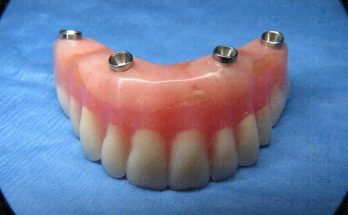Cracked, stained, or misshaped teeth can be a real blow to your confidence. Reflect on a moment when you found it hard to smile. Perhaps you were at a job interview, a first date, or a high-stakes poker game where your winning hand was overshadowed by your reluctance to reveal those less-than-perfect teeth. Now imagine, in place of that insecurity, a brilliant and flawless smile. This is where dental veneers come in – petite, custom-made shells designed to cover the front of your teeth, giving you a smile that glows with confidence. Even in a city renowned for its healthcare – consider the top-quality fillings san antonio provides – veneers stand out as a remarkable solution for many cosmetic dental problems. But what exactly are these dental game-changers? This comprehensive guide will help you understand more about dental veneers.
What Are Dental Veneers?
Dental veneers are thin, custom-made shells crafted from tooth-colored materials. They’re designed to cover the front surface of the teeth, improving their appearance. Imagine slipping a protective, cosmetic cover over a book that has seen better days – that’s what veneers do for your teeth.
Types of Dental Veneers
There are primarily two types of dental veneers – porcelain and composite resin. Porcelain veneers are durable, lasting up to 15 years with proper care. They resist stains better and mimic the light-reflecting properties of natural teeth. Composite resin veneers may not last as long but can be repaired easily and require less tooth surface removal before application.
Pros and Cons of Dental Veneers
Like any dental procedure, veneers have their pros and cons. On the plus side, they give you a natural tooth appearance, are tolerated well by gum tissue, and resist stains. On the downside, the process is not reversible, and veneers are more costly than composite resin bonding. Additionally, they can’t be repaired if they chip or crack, unlike crowns or fillings.
The Process of Getting Dental Veneers
The process usually involves three appointments – diagnosis and treatment planning, preparation, and bonding. The diagnosis stage involves active participation. You need to take an active part in smile design. The preparation stage involves removing about half a millimeter of enamel from the tooth surface, nearly equal to the thickness of the veneer to be added. The bonding stage involves cementing the veneer to your tooth.
Maintenance of Dental Veneers
Maintaining veneers is simple: brush, floss, and follow good oral hygiene. Although veneers are stain-resistant, dentists recommend avoiding coffee, tea, red wine, and tobacco to maintain the beauty of your veneer.
The journey to a more confident smile begins with understanding your options. Dental veneers, as an effective solution, have transformed many smiles. Still, to make an informed decision, it’s essential to consider the types, pros and cons, the process, and the maintenance involved. Your smile represents you, and with dental veneers, it’s a step towards a more confident you.




